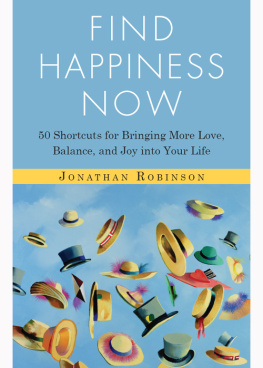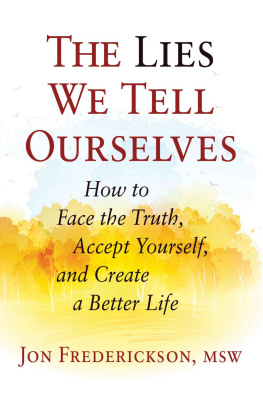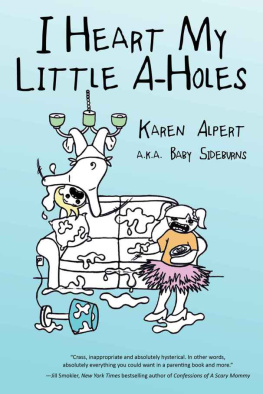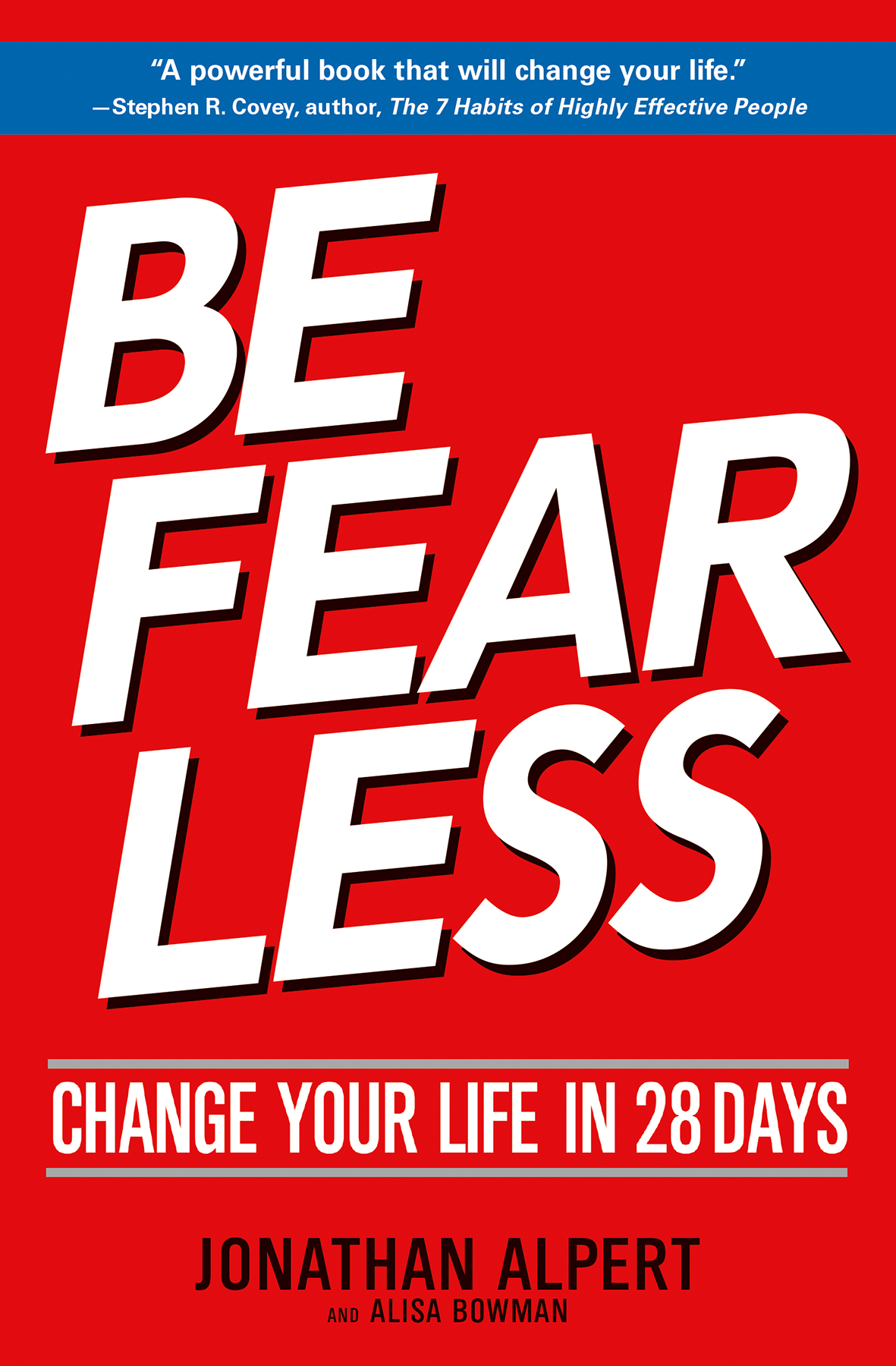In April of 2012, just days before the hardcover version of Be Fearless was released, I wrote an Opinion piece for the New York Times, titled In Therapy Forever? Enough Already (April 22, 2012). The piece shed light on something I had been seeing for years: interminable therapy. In other words, people who remained in therapy, despite not getting better. They felt stuck, mired even. They invested thousands of dollars and, in some cases, felt worse.
The article would be controversial. I knew that, but I hoped to spark a thoughtful conversation and spirited debate about what truly helps peopleand what does not. To some extent that happened, but I also received countless hate emails from therapists around the globe. Colleagues attempted to petition the state to get my license revoked. In a vitriol-fueled speech, a New York University commencement speaker warned graduates that I didnt know what I was talking about. My graduate school alma mater, a fine institution that I thought would welcome critical thinking, banned me from an online networking group. Therapists wrote salacious articles about me that were based not on fact but, ironically, fear: the very thing this book is about.
The article was also highly acclaimed by therapists worldwide who believe as I do: Lets try to help patients get better (not just feel better), be self-sufficient, and graduate from therapy. They praised my courage to speak up. Patients who had been stuck in therapy for years, decades even, wrote to tell me how refreshing it was to know that they didnt have to stay in therapy, especially when they were not improving.
Was it worth it, to be a whistleblower of sorts, to call out nearly an entire profession that had been set in its ways for decades? You bet it was. My guess is that Sigmund Freud, the father of analysis, would be disappointed by how his theory evolved after his death and where it has led people: to endless therapy.
Im encouraged by the continued acceptance of cognitive-behavioral therapy, which forms the basis of the advice in this book and which remains the only empirically based form of therapy. Most of all, I feel confident knowing that, by speaking up and facing such an intense backlash, I did exactly what I recommend in the pages of this book: I faced down my fear. Thats how I know you can do the same.
In Therapy Forever? Enough Already
My therapist called me the wrong name.
I poured out my heart; my doctor looked at his watch.
My psychiatrist told me I had to keep seeing him or I would be lost.
New patients tell me things like this all the time. And they tell me how former therapists sat, listened, nodded, and offered little or no advice, for weeks, months, sometimes years. A patient recently told me that, after seeing her therapist for several years, she asked if he had any advice for her. The therapist said, See you next week.
When I started practicing as a therapist fifteen years ago, I thought complaints like this were anomalous. But I have come to a sobering conclusion over the years: that ineffective therapy is disturbingly common.
Talk to friends, keep your ears open at a cafe, or read discussion boards online about length of time in therapy. I bet youll find many people who have remained in therapy long beyond the time they thought it would take to solve their problems. According to a 2010 study published in the American Journal of Psychiatry, 42 percent of people in psychotherapy use 3 to 10 visits for treatment, while 1 in 9 have more than 20 sessions.
For this 11 percent, therapy can become a dead-end relationship. Research shows that, in many cases, the longer therapy lasts the less likely it is to be effective. Still, therapists are often reluctant to admit defeat.
A 2001 study published in the Journal of Counseling Psychology found that patients improved most dramatically between their seventh and tenth sessions. Another study, published in 2006 in the Journal of Consulting and Clinical Psychology, looked at nearly 2,000 people who underwent counseling for 1 to 12 sessions and found that, while 88 percent improved after one session, the rate fell to 62 percent after 12. Yet, according to research conducted at the University of Pennsylvania, therapists who practice more traditional psychotherapy treat patients for an average of 22 sessions before concluding that progress isnt being made. Just 12 percent of those therapists choose to refer their stagnant patients to another practitioner. The bottom line: Even though extended therapy is not always beneficial, many therapists persist in leading patients on an open-ended, potentially endless, therapeutic course.
Proponents of long-term therapy have argued that severe psychological disorders require years to manage. That may be true, but its also true that many therapy patients dont suffer severe disorders. Anxiety and depression are the top predicaments for which patients seek mental health treatment; schizophrenia is at the bottom of the list.
In my experience, most people seek therapeutic help for discrete, treatable issues: They are stuck in unfulfilling jobs or relationships, they cant reach their goals, are fearful of change and depressed as a result. It doesnt take years of therapy to get to the bottom of those kinds of problems. For some of my patients, it doesnt even take a whole session.
Therapy canand shouldfocus on goals and outcomes, and people should be able to graduate from it. In my practice, the people who spent years in therapy before coming to me were able to face their fears, calm their anxieties, and reach life goals quicklyoften within weeks.
Why? I believe its a matter of approach. Many patients need an aggressive therapist who prods them to face what they find uncomfortable: change. They need a therapists opinion, advice, and structured action plans. They dont need to talk endlessly about how they feel or about childhood memories. A recent study by the National Institute for Health and Welfare in Finland found that active, engaging, and extroverted therapists helped patients more quickly in the short term than cautious, nonintrusive therapists.
This approach may not be right for every patient, but the results described in the Finnish study are consistent with my experience.
If a patient comes to me and tells me shes been unhappy with her boyfriend for the past year, I dont ask, as some might, How do you feel about that? I already know how she feels about that. She just told me: Shes unhappy. When she asks me what I think she should do, I dont respond with a return interrogatory, like What do you think you should do? If she knew, she wouldnt ask me for my thoughts.
Instead, I ask what might be missing from her relationship and sketch out possible ways to fill in relationship gaps or, perhaps, to end it in a healthy way. Rather than dwell on the past and hash out stories from childhood, I encourage patients to find the courage to confront an adversary, take risks, and embrace change. My aim is to give patients the skills needed to confront their fear of change, rather than to nod my head and ask how they feel.
In graduate school, my classmates and I were taught to serve as guides, whose job it is to help patients reach their own conclusions. This may work, but it can take a long time. I dont think patients want to take years to feel better. They want to do it in weeks or months.
Popular misconceptions reinforce the belief that therapy is about resting on a couch and talking about ones problems. So thats what patients often do. And just as often this leads to codependence. The therapist, of course, depends on the patient for money, and the patient depends on the therapist for emotional support. And, for many therapy patients, it is satisfying just to have someone listen, and they leave sessions feeling better.













